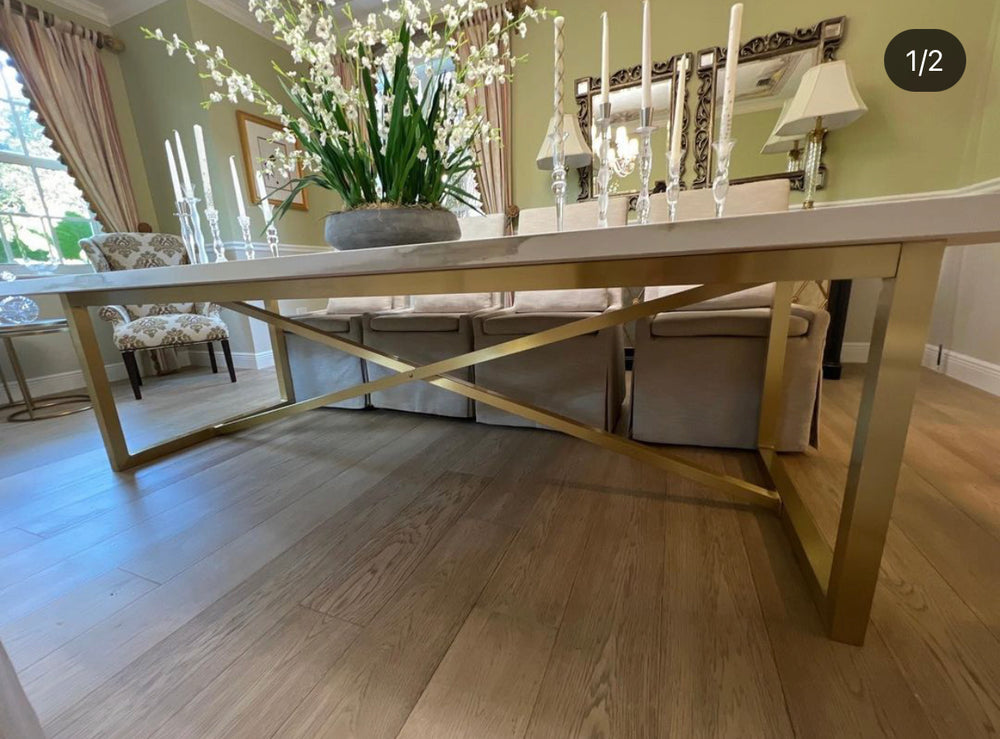Table Legs: Just How to Select the very best Designs for Your Space
Picking the ideal eating table legs is essential for both aesthetic and functional harmony in your eating space. Whether your room boasts a smooth, modern vibe or leans in the direction of a much more typical setting, the style of the legs can dramatically affect the overall appearance. Tapered legs show contemporary beauty, while transformed legs offer a nod to traditional appeal. Past design, the product-- be it warm timber or sleek metal-- plays an essential function in establishing the tone. Yet how do you make certain these aspects complement your existing decoration while providing the needed security? The solution hinges on a well balanced strategy.
Evaluating Your Dining-room Design
Exactly how do you figure out the very best table legs for your space? The solution starts with a comprehensive evaluation of your dining space style. A cohesive style guarantees that your table legs boost the total visual as opposed to encounter existing components. Beginning by observing the building attributes of your eating area. Are there popular qualities such as subjected beam of lights, complex moldings, or minimal lines? These details typically dictate whether a standard, rustic, contemporary, or industrial design is most ideal.
Following, think about the existing furniture and decor. The products, colors, and textures within the area play an essential role. An eating room with streamlined, contemporary chairs and metallic accents might benefit from simple, structured table legs. Conversely, an area loaded with vintage items and rich textiles may call for luxuriant, carved legs.
Big, open eating spaces can fit heavier, much more significant legs, whereas smaller sized spaces need even more fragile, inconspicuous designs. By thoroughly assessing these variables, you can choose dining table legs that harmoniously blend with your dining space's design.
Popular Leg Styles Clarified

One widespread style is the tapered leg, renowned for its streamlined, modern look. Next off, the transformed leg features complex spindle-like layouts, frequently located in traditional and farmhouse settings.
Cabriole legs, with their unique contours, are synonymous with French Provincial and Queen Anne furniture. Their elegant, moving lines bring a sense of sophistication and historic beauty (dining room table legs). For those favoring a robust and simple style, square legs give tough support and a clean, geometric appearance, suitable for commercial or minimal areas
Last but not least, barrette legs offer a retro, mid-century contemporary vibe. Made from metal, these legs are both light-weight and solid, including an one-of-a-kind visual contrast to wooden table tops. Recognizing these designs will he has a good point certainly guide you in selecting dining table legs that improve your area's aesthetic and performance.
Product Factors To Consider

Steel legs, usually made from stainless steel, iron, or aluminum, offer a modern-day and commercial appearance while making certain robust support. They are usually extra immune to wear and tear, making them a resilient option.

Other products like bamboo or rattan provide environmentally friendly choices, bringing a natural and loosened up vibe to the eating area. Each product has its benefits and drawbacks, and the most effective choice will depend upon your details needs and choices.
Balancing Looks and Functionality
Accomplishing the useful reference excellent balance between aesthetics and performance is crucial when choosing table legs. While the aesthetic appeal of table legs can significantly improve the total ambiance of a dining area, their useful aspects can not be overlooked. The design of the legs must harmonize with the space's decor, yet they should also supply sufficient assistance and security for the table.
Consider the architectural design of your area. Smooth, modern-day insides might benefit from minimalist, metal legs that provide a clean and unobtrusive appearance. On the other hand, standard setups usually enhance transformed or sculpted wood legs that include a touch of elegance and sophistication.
Functionality encompasses the stability and sturdiness of the legs. As an example, trestle legs, understood for their toughness, can offer strong support for larger tables, making them perfect for households or frequent entertainers. dining room table legs. Alternatively, pedestal legs can use even more legroom and versatility, permitting better seats setups
Additionally, the height and positioning of the legs are essential for comfortable eating. Legs put as well far internal might hinder seats, while those as well close to the side can restrict movement. Thus, thoughtful factor to consider of both aesthetic and functional components is extremely important for an ideal dining experience.
Modification and Do It Yourself Options
Personalization opens a realm of opportunities for creating dining table legs that are distinctly tailored to your taste and demands. Specific style aspects, such as turned legs, tapered forms, or elaborate makings, can be included to reflect your style.
For those likely in the direction of do-it-yourself (DIY) jobs, developing custom dining table legs uses both a fulfilling experience and the opportunity to achieve a bespoke aesthetic. DIY lovers can resource raw products and utilize woodworking or metalworking tools to craft legs that meet exact requirements. In addition, numerous online tutorials and workshops offer assistance, making the procedure a lot more obtainable for newbies.
Ultimately, whether going with professional personalization or starting a DIY venture, the capability to tailor dining read this table legs guarantees that the final product harmonizes with your interior decoration vision, enhancing both functionality and aesthetic allure.
Verdict
Selecting the ideal eating table legs requires mindful consideration of the overall design of the dining space, including existing architectural features and furnishings. Eventually, the chosen table legs must complement the style, supplying both aesthetic charm and practical assistance.